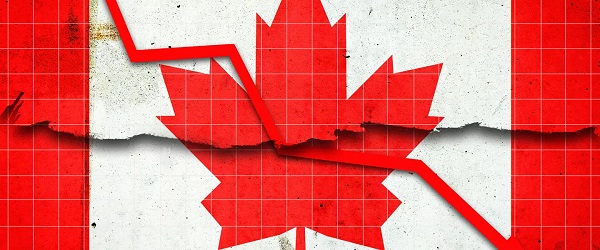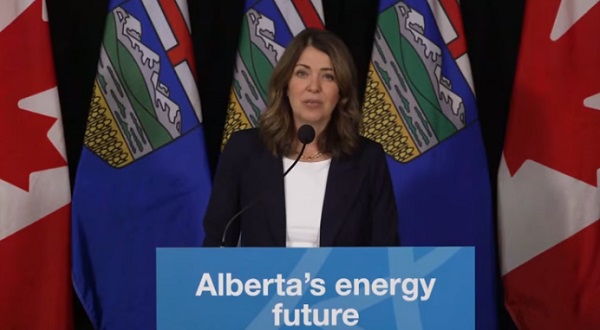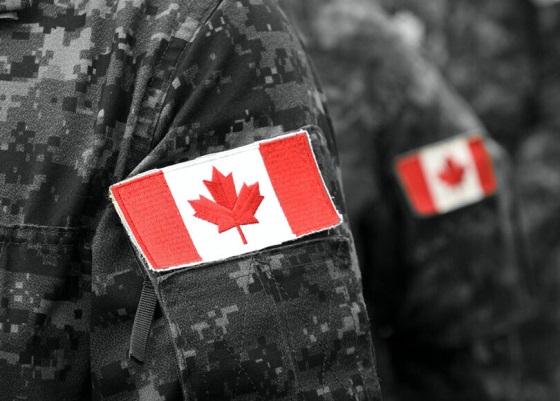Business
Fiscal update reveals extent of federal government mismanagement

From the Fraser Institute
By Jake Fuss and Grady Munro
Following the sudden departure of Chrystia Freeland as finance minister, the Trudeau government released its 2024 fall fiscal update on Monday. Unsurprisingly, spending is up, the deficit has ballooned even higher, and the Trudeau government continues to utterly mismanage Canada’s finances.
Let’s get into the numbers.
For the current fiscal year (2024-25), the update estimates the federal government will spend $543.4 billion while taking in $495.2 billion in revenues. This means the government plans to run a $48.3 billion deficit—$8.5 billion higher than the $39.8 billion deficit that had originally been planned just eight months ago.
The Trudeau government’s incessant need to introduce new spending at every turn has driven this increase in borrowing. Indeed, discretionary spending on programs is now expected to be $6.1 billion higher than initially projected in this year’s budget tabled in April. Revenues have also taken a hit compared to projections from the spring, primarily from the federal government’s new GST holiday.
Not only will the government run a larger deficit this year, but future deficits are also expected to rise. Cumulative deficits from 2025-26 to 2028-29 are now expected to be $14.9 billion higher than projected in the spring budget.
There are costs associated with running deficits and accumulating debt, and Canadians ultimately bear these costs. Just like anyone who takes out a loan at a bank, government must pay interest on the money it borrows. In the case of the federal government, these interest costs will reach an estimated $53.7 billion in 2024-25 alone—more than all revenue collected via the federal GST. In other words, every dollar that Canadians are expected to pay in GST this year will go towards federal debt interest, as opposed to any services or programs. And as the federal government continues to borrow more, all else equal, these interest costs will continue to rise.
While the updated deficits for 2024-25 and beyond are still estimates, the 2024 FES presents what’s likely the final deficit number for the 2023-24 fiscal year. In a remarkable display of fiscal mismanagement, the Trudeau government ran a $61.9 billion deficit last year—$21.9 billion higher than the $40.0 billion deficit projected in the budget.
This means the federal government has broken one of its fiscal rules (a.k.a. guardrails) that help guide policy on spending, taxes and borrowing. One year ago, the Trudeau government established three fiscal rules—including to keep the 2023-24 deficit at or below $40.1 billion. These rules were reaffirmed in the spring budget, and have been a key feature of the Trudeau government’s so-called “responsible economic plan.”
However, there’s nothing responsible about establishing a rule only to break it a year later. Unfortunately, the Trudeau government has made a habit breaking its self-imposed rules. In 2015, the government established its first fiscal rule—balancing the budget by fiscal year 2019-20. But it quickly abandoned this rule in subsequent months and proposed an alternative rule—to reduce federal debt relative to the size of the economy (GDP). But again, this rule became an afterthought, as federal debt increased relative to GDP in 2019-20 and continued to sharply increase during the pandemic and has yet to return to anywhere near pre-COVID levels.
As has happened consistently in the past decade, this year’s fall update reveals that spending and deficits are up compared to the budget plan the government presented just months ago. The Trudeau government is utterly mismanaging the Canada’s finances, which has caused turmoil inside the government while Canadians bear the consequences.
Business
Is Carney Falling Into The Same Fiscal Traps As Trudeau?

From the Frontier Centre for Public Policy
By Jay Goldberg
Rosy projections, chronic deficits, and opaque budgeting. If nothing changes, Carney’s credibility could collapse under the same weight.
Carney promised a fresh start. His budget makes it look like we’re still stuck with the same old Trudeau playbook
It turns out the Trudeau government really did look at Canada’s economy through rose-coloured glasses. Is the Carney government falling into the same pattern?
New research from the Frontier Centre for Public Policy shows that federal budgets during the Trudeau years “consistently overestimated [Canada’s] fiscal health” when it came to forecasting the state of the nation’s economy and finances over the long term.
In his research, policy analyst Conrad Eder finds that, when looking specifically at projections of where the economy would be four years out, Trudeau-era budgets tended to have forecast errors of four per cent of nominal GDP, or an average of $94.4 billion.
Because budgets were so much more optimistic about long-term growth, they consistently projected that government revenue would grow at a much faster pace. The Trudeau government then made spending commitments, assuming the money would be there. And when the forecasts did not keep up, deficits simply grew.
As Eder writes, “these dramatic discrepancies illustrate how the Trudeau government’s longer-term projections consistently underestimated the persistence of fiscal challenges and overestimated its ability to improve the budgetary balance.”
Eder concludes that politics came into play and influenced how the Trudeau government framed its forecasts. Rather than focusing on the long-term health of Canada’s finances, the Trudeau government was focused on politics. But presenting overly optimistic forecasts has long-term consequences.
“When official projections consistently deviate from actual outcomes, they obscure the scope of deficits, inhibit effective fiscal planning, and mislead policymakers and the public,” Eder writes.
“This disconnect between projected and actual fiscal outcomes undermines the reliability of long-term planning tools and erodes public confidence in the government’s fiscal management.”
The public’s confidence in the Trudeau government’s fiscal management was so low, in fact, that by the end of 2024 the Liberals were polling in the high teens, behind the NDP.
The key to the Liberal Party’s electoral survival became twofold: the “elbows up” rhetoric in response to the Trump administration’s tariffs, and the choice of a new leader who seemed to have significant credibility and was disconnected from the fiscal blunders of the Trudeau years.
Mark Carney was recruited to run for the Liberal leadership as the antidote to Trudeau. His résumé as governor of the Bank of Canada during the Great Recession and his subsequent years leading the Bank of England seemed to offer Canadians the opposite of the fiscal inexperience of the Trudeau years.
These two factors together helped turn around the Liberals’ fortunes and secured the party a fourth straight mandate in April’s elections.
But now Carney has presented a budget of his own, and it too spills a lot of red ink.
This year’s deficit is projected to be a stunning $78.3 billion, and the federal deficit is expected to stay over $50 billion for at least the next four years.
The fiscal picture presented by Finance Minister François-Philippe Champagne was a bleak one.
What remains to be seen is whether the chronic politicking over long-term forecasts that plagued the Trudeau government will continue to be a feature of the Carney regime.
As bad as the deficit figures look now, one has to wonder, given Eder’s research, whether the state of Canada’s finances is even worse than Champagne’s budget lets on.
As Eder says, years of rose-coloured budgeting undermined public trust and misled both policymakers and voters. The question now is whether this approach to the federal budget continues under Carney at the helm.
Budget 2025 significantly revises the economic growth projections found in the 2024 fall economic statement for both 2025 and 2026. However, the forecasts for 2027, 2028 and 2029 were left largely unchanged.
If Eder is right, and the Liberals are overly optimistic when it comes to four-year forecasts, then the 2025 budget should worry Canadians. Why? Because the Carney government did not change the Trudeau government’s 2029 economic projections by even a fraction of a per cent.
In other words, despite the gloomy fiscal numbers found in Budget 2025, the Carney government may still be wearing the same rose-coloured budgeting glasses as the Trudeau government did, at least when it comes to long-range fiscal planning.
If the Carney government wants to have more credibility than the Trudeau government over the long term, it needs to be more transparent about how long-term economic projections are made and be clear about whether the Finance Department’s approach to forecasting has changed with the government. Otherwise, Carney’s fiscal credibility, despite his résumé, may meet the same fate as Trudeau’s.
Jay Goldberg is a fellow with the Frontier Centre for Public Policy.
Business
Carney government should privatize airports—then open airline industry to competition

From the Fraser Institute
By Alex Whalen and Jake Fuss
This holiday season, many Canadians will fly to spend time to with family and friends. But air travellers in Canada consistently report frustration with service, cost and choice. In its recent budget, the Carney government announced it will consider “options for the privatization of airports.” What does this mean for Canadians?
Up until the 1990s, the federal government served as both the owner and operator of Canada’s major airports. The Chrétien government partially privatized and transferred the operation of major airports to not-for-profit airport authorities, while the federal government remained the owner of the land. Since then, the federal government has effectively been the landlord for Canada’s airports, collecting rent each year from the not-for-profit operating authorities.
What would full privatization of airports look like?
If the government allows private for-profit businesses to own Canada’s major airports, their incentives would be to operate as efficiently as possible, serve customers and generate profits. Currently, there’s little incentive to compete as the operating authorities are largely unaccountable because they only report to government officials in a limited form, rather than reporting directly to shareholders as they would under privatization. Private for-profit airports exist in many other countries, and research has shown they are often less costly for passengers and more innovative.
Yet, privatization of airports should be only the first step in a broader package of reforms to improve air travel in Canada. The federal government should also open up competition by creating the conditions for new airports, new airlines and new investment. Currently, Canada restricts foreign ownership of Canadian airlines, while also restricting foreign airlines from flying within Canada. Consequently, Canadians are left with little choice when booking air travel. Opening up the industry by reversing these policies would force incumbent airlines to compete with a greater number of airlines, generating greater choice and likely lower costs for consumers.
Moreover, the federal government should reduce the taxes and fees on air travel that contribute to the cost of airline tickets. Indeed, according to our recent research, among peer countries, Canada has among the most expensive air travel taxes and fees. These costs get passed on to consumers, so it’s no surprise that Canada consistently ranks as a very expensive country for air travel.
If the Carney government actually privatizes Canada’s airports, this would be a good first step to introducing greater competition in an industry where it’s badly needed. But to truly deliver for Canadians, the government must go much further and overhaul the numerous policies, taxes and fees that limit competition and drive up costs.
-

 Business1 day ago
Business1 day agoRecent price declines don’t solve Toronto’s housing affordability crisis
-

 Censorship Industrial Complex1 day ago
Censorship Industrial Complex1 day agoA Democracy That Can’t Take A Joke Won’t Tolerate Dissent
-

 Artificial Intelligence2 days ago
Artificial Intelligence2 days agoThe Emptiness Inside: Why Large Language Models Can’t Think – and Never Will
-

 Daily Caller1 day ago
Daily Caller1 day agoTech Mogul Gives $6 Billion To 25 Million Kids To Boost Trump Investment Accounts
-

 Business1 day ago
Business1 day agoCanada’s future prosperity runs through the northwest coast
-

 Great Reset1 day ago
Great Reset1 day agoCanada’s MAiD (State Sanctioned Murder) Report Just Dropped
-

 Automotive19 hours ago
Automotive19 hours agoPower Struggle: Governments start quietly backing away from EV mandates
-

 Business1 day ago
Business1 day agoOttawa’s gun ‘buyback’ program will cost billions—and for no good reason













